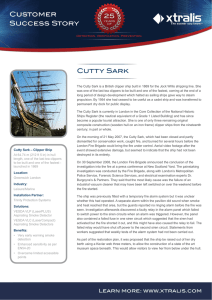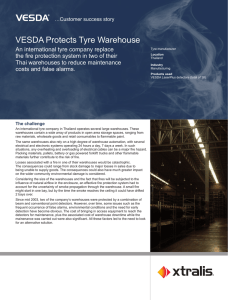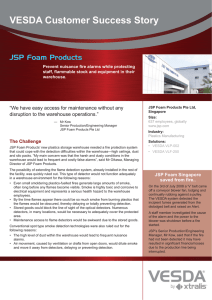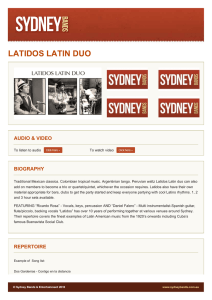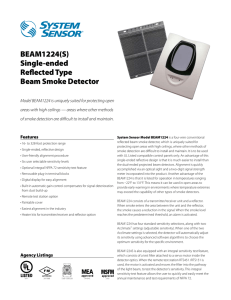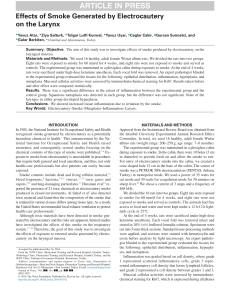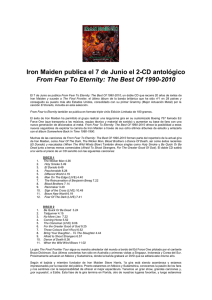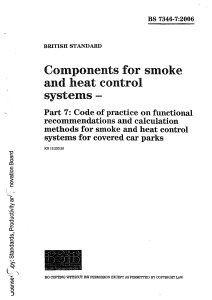Sydney Acer Arena
Anuncio
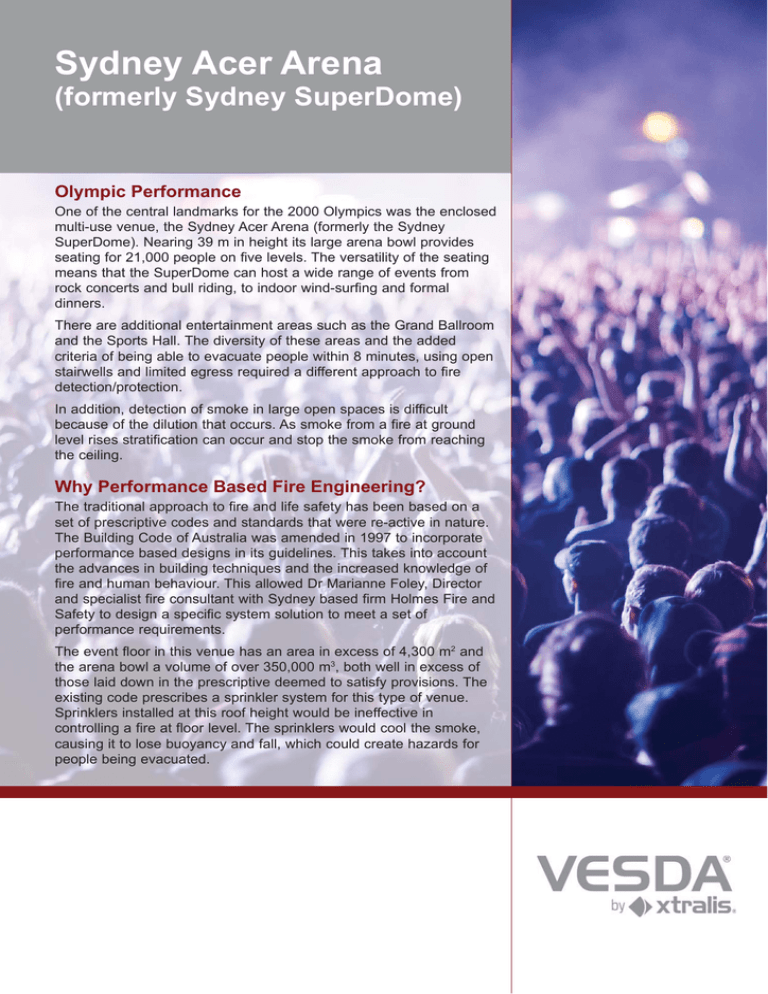
Sydney Acer Arena (formerly Sydney SuperDome) Olympic Performance One of the central landmarks for the 2000 Olympics was the enclosed multi-use venue, the Sydney Acer Arena (formerly the Sydney SuperDome). Nearing 39 m in height its large arena bowl provides seating for 21,000 people on five levels. The versatility of the seating means that the SuperDome can host a wide range of events from rock concerts and bull riding, to indoor wind-surfing and formal dinners. There are additional entertainment areas such as the Grand Ballroom and the Sports Hall. The diversity of these areas and the added criteria of being able to evacuate people within 8 minutes, using open stairwells and limited egress required a different approach to fire detection/protection. In addition, detection of smoke in large open spaces is difficult because of the dilution that occurs. As smoke from a fire at ground level rises stratification can occur and stop the smoke from reaching the ceiling. Why Performance Based Fire Engineering? The traditional approach to fire and life safety has been based on a set of prescriptive codes and standards that were re-active in nature. The Building Code of Australia was amended in 1997 to incorporate performance based designs in its guidelines. This takes into account the advances in building techniques and the increased knowledge of fire and human behaviour. This allowed Dr Marianne Foley, Director and specialist fire consultant with Sydney based firm Holmes Fire and Safety to design a specific system solution to meet a set of performance requirements. The event floor in this venue has an area in excess of 4,300 m2 and the arena bowl a volume of over 350,000 m3, both well in excess of those laid down in the prescriptive deemed to satisfy provisions. The existing code prescribes a sprinkler system for this type of venue. Sprinklers installed at this roof height would be ineffective in controlling a fire at floor level. The sprinklers would cool the smoke, causing it to lose buoyancy and fall, which could create hazards for people being evacuated. The VESDA Advantage…… VESDA – the worlds leading aspirating smoke detection system – provides the earliest possible warning of a potential fire event in the Acer Stadium by detecting smoke particles at the incipient (first) stage of fire. (Refer Fire Growth Curve) VESDA’s ability to provide multiple alarm trigger points between .005% and 20% obscuration makes it the ideal detection system to give the early warning required to provide time for evacuation. Progression of Fire Growth over Time VESDA provides proactive detection in this huge volumetric area by actively sampling the air from the protected zone via multiple sampling holes in the ceiling mounted pipe network. This sample air is transported to centrally located, calibrated laser based detectors for analysis. Smoke changes can be reliably detected by VESDA’s laser based technology at a minimum level of 0.0015% obscuration per metre – a level invisible to the human eye. VESDA’s advanced sensing technology allows individually programmable alarm thresholds to activate at specific smoke levels in any environment. This allows the user to adapt the system to clean, dusty, dirty or smoky environments. www.xtralis.com The Americas +1 781 740 2223 Asia +852 2916 8894 Australia and New Zealand +61 3 9936 7000 Continental Europe +32 56 24 19 51 UK and the Middle East +44 1442 242 330 The contents of this document are provided on an “as is” basis. No representation or warranty (either express or implied) is made as to the completeness, accuracy or reliability of the contents of this document. The manufacturer reserves the right to change designs or specifications without obligation and without further notice. Except as otherwise provided, all warranties, express or implied, including without limitation any implied warranties of merchantability and fitness for a particular purpose are expressly excluded. This document includes registered and unregistered trademarks. All trademarks displayed are the trademarks of their respective owners. Your use of this document does not constitute or create a licence or any other right to use the name and/or trademark and/or label. This document is subject to copyright owned by Xtralis AG (“Xtralis”). You agree not to copy, communicate to the public, adapt, distribute, transfer, sell, modify or publish any contents of this document without the express prior written consent of Xtralis. Document: 18525_02 VESDA’s filtration technology enables it to be used in multi purpose venues where some events will create a dusty /dirty environment. This dust has caused conventional type detectors to false alarm. The advanced learning technology in the software and the ability to program time delays at each of the alarm levels minimises the occurrence of false/unwanted alarms in these types of applications. By using a network of pipes to transport the air sample, the design of any VESDA system is extremely flexible, allows for easy maintenance and will be computer-modelled prior to installation. In addition, VESDA offers global distribution and support networks, and the flexibility to interface with existing fire systems.

